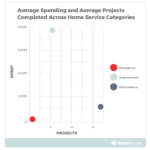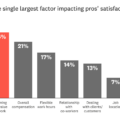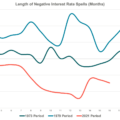Data Suggests Lower Income Households Prioritize Spending on Home Maintenance

- Household spending on remodeling and maintenance expenditures changes as household income increases.
- Across all household income levels, maintenance spending increases by $2.29 for every additional thousand dollars of income, while remodeling spending increases by $25.44 for every additional thousand dollars of income.
- However, lower income households put a proportionally higher focus on maintenance spending for each new dollar of income, relative to higher income households; this suggests, in part, wise choices on the part of lower income consumers to preserve the value of their home investments and prevent costlier emergency repairs.
Both maintenance and remodeling spending are critical parts of owning a home.
Remodeling is an important part of making sure our homes bring us joy and are optimized for our families and living situations. Remodeling also makes for great television and it can be fun to dream of that perfect kitchen, cozy reading nook, or inviting family room.
Maintenance spending is a vital part of protecting our housing investments, adjusting with the seasons, and preventing costlier emergency repairs later, even if it does not have quite as much TV appeal as remodeling.
But how does household spending on the two categories of projects change as household income increases? How do households proportionally balance their spending choices between these two categories?

Source: HomeAdvisor analysis of Department of Housing and Urban Development / U.S. Census Bureau, American Housing Survey Data.
Our new analysis suggests lower income households are making wise budgeting choices around the relative importance of maintenance spending.
How Spending Changes:
Every thousand dollars of additional household income increases household maintenance spending by $2.29 above a baseline spending level of $268 (for households with little/no income); while in remodeling every thousand dollars of additional household income increases remodeling spending by $25.44 from a baseline household spend on remodeling of $1,442.
However, the trends don’t behave the same way across household income groups.
Regarding remodeling, among households earning less than $75,000 a year, spending increases by $40.85 for every thousand dollars of additional income. For households earning more than $75,000 in household income the rate of spending increase drops to $17.24 for every thousand dollars in additional household income, a little less than half the rate of increase.
Maintenance spending is a different story.
Among households earning less than $75,000 a year, maintenance spending increases by $5.93 for every thousand dollars of income from a baseline of $92; among households earning more than $75,000 a year, maintenance spending only increases an average of $1.20 for every thousand dollars of additional income from a baseline of $581. In other words, the rate of spending increase on maintenance is about 80% higher in low income households than in higher income households.
Looking at this a little differently: among households earning less than $75,000 in household income, the rate of increase for remodeling spending vs. maintenance spending is about 7 times higher, while for households above $75,000 the rate of increase is around 14 times higher. So, what does this mean?

Source: HomeAdvisor analysis of Department of Housing and Urban Development / U.S. Census Bureau, American Housing Survey Data.
Remodeling spending scales much higher with income, while maintenance spending does not. This means that maintenance spending consumes a proportionally higher share of lower income household spending than higher income household spending.
Possible Reasons Why:
There are multiple reasons why this could be the case, but two likely reasons are renovations as a luxury good, and maintenance as a necessity.
Remodeling as a luxury good makes sense, as there are a vast array of remodeling options. If one is choosing to beautify their roof, for example, the difference between asphalt and slate is nearly a 10 fold increase in roofing cost. While quality in a technician performing maintenance on household systems is important, it’s unlikely in most cases, that the price for maintenance labor scales as dramatically as the price of remodeling materials.
The second likely reason why we could see this difference in the rate of spending increases is the wisdom of lower income households in budgeting. Because failing to adequately maintain vital housing systems could result in loss of the value of the home investment or costly emergency repairs, lower income households are wisely prioritizing maintenance spending, because adequately budgeting for and prioritizing maintenance spending, even if it’s not as appealing as an exciting new remodel, can save households in the long run. For example, the average maintenance spending of a household earning between $45,000 and $55,000 is $390, significantly below the average spending on emergency repair – for those households requiring them – of over $1,200 according to our State of Home Spending Report. So, for households in these income brackets, it makes sense to have a greater proportional focus on maintenance.
Takeaways:
- Both remodeling and maintenance spending are important parts of household home service spending because of their role in making our homes better suited to our needs and preserving our household investments.
- Across all household income levels, higher income means higher average household spending on both remodeling and maintenance
- While both increase, the rate of increase declines in both, but much more so for maintenance spending.
- This could be in part because lower income households are wisely spending a higher percentage of their income on preserving their housing investments and preventing costlier emergency repairs in the future, and because of the differing nature of the costs associated with both remodeling and maintenance.







 Press & Media Inquiries
Press & Media Inquiries Angi Economics
Angi Economics